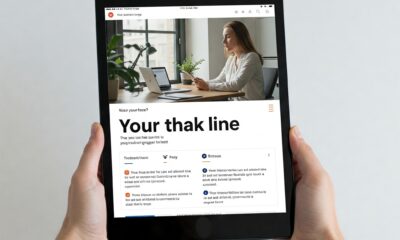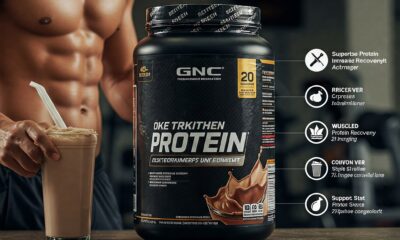Nutrition
This Nutritionist Shares His First Diet Tips For Adults, And The Health Benefits Are Endless.
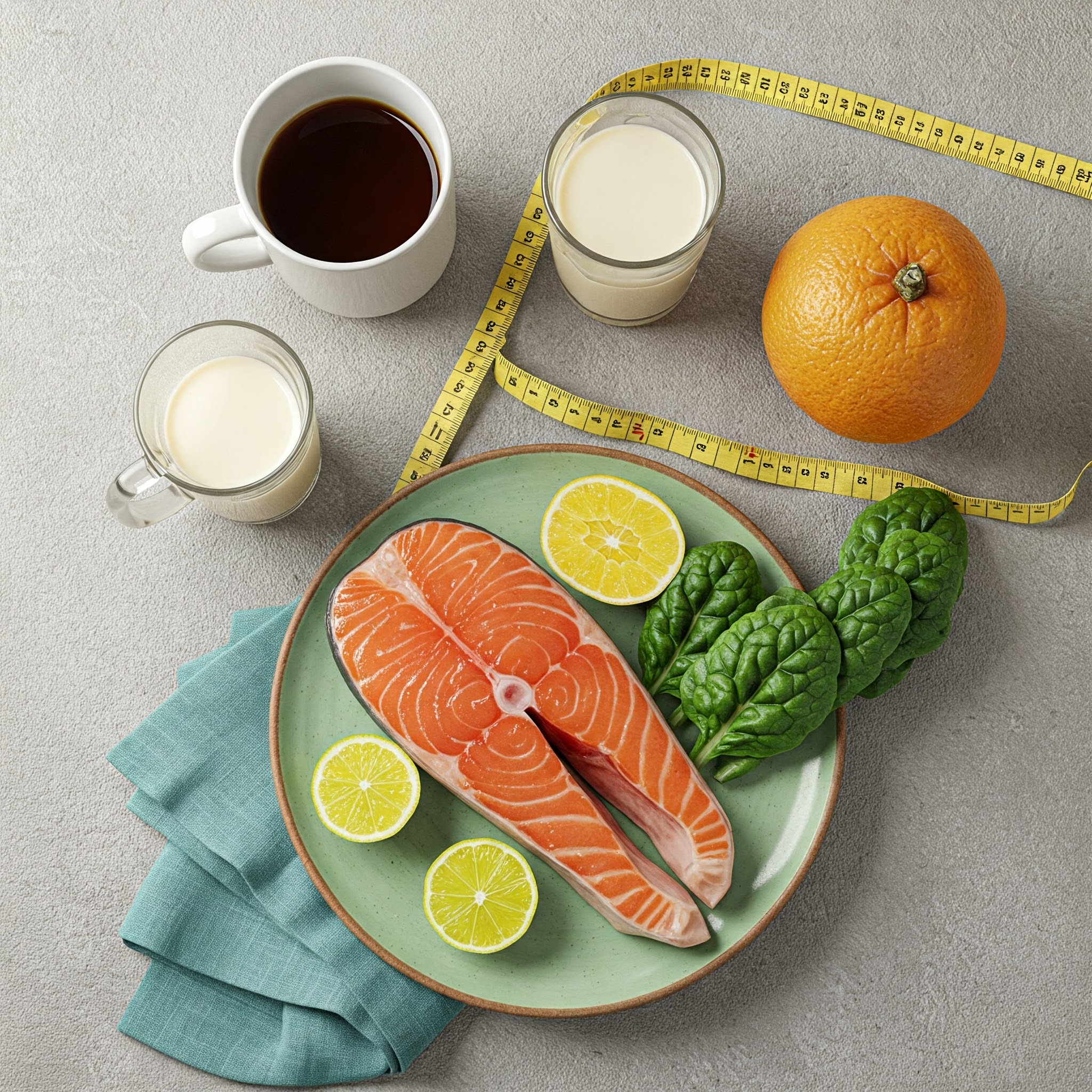
Every decade of our lives feels a little different. Most of us are used to having unlimited energy in our 20s even after four hours of sleep and a few margaritas, and we need a lot of sleep (and less alcohol) in our 30s. Starting from birth, our bodies and nutritional needs change – which is why it makes sense that we need more food as we age.
Certain foods can help with energy levels as we age, explains Kimberly Gomer, a registered dietitian and former director of nutrition at the Pritikin Longevity Center. But diet can also be key to disease prevention. He said: «The root cause of all disease, whether it’s heart disease, cancer, diabetes, obesity or dementia, can be caused by inflammation. «How that inflammation responds to our body. it seems to increase as we age, causing disease and suffering. Eating anti-inflammatory foods, along with eliminating foods that cause inflammation, is key to maintaining physical and mental health as we age.
1 food you should eat more of as you age


If you’re looking for a special diet that can support the health of the needle, the experts we spoke to recommended choosing a high-quality fatty protein, namely salmon. «Fatty fish, such as salmon, are rich in EPA (eicosapentaenoic acid) and DHA (docosahexaenoic acid),» which are long-chain omega-3 polyunsaturated fatty acids, explained Dr. Kevin Cooke, a board-certified primary care physician who specializes in long-term medicine and brain function. «Adults should aim to include these in their diet at least twice a week to boost omega-3 intake, which supports brain health and reduces inflammation.»
Gomer added that we need protein for muscle maintenance and strength, and healthy fats for hormones and fat-soluble vitamins. «As we age, we will naturally lose muscle mass – if we don’t use it, we lose it,» he said. «And as we get older, many things can happen in our lives where we don’t work well and don’t have the will to build and maintain muscle. All of our cells, including brain cells, need healthy fats to function. If we don’t provide them, we can get into physical and mental problems.»
Edwina Clark, a registered dietitian, added that if salmon isn’t your thing, other sources of high-quality protein can include skinless chicken, eggs and tofu. It is especially important for those 65 and older. «Studies show that the ideal protein intake for adults is 1-1.2 grams [per kilogram of body weight], which is higher than the general recommendation for adults of 0.8 grams per day,” he said. Keep that in mind, any of the foods listed can be good to help you meet your needs.
Some foods to consider adding to your plate


While packing in protein and healthy fats is a good idea as you get older, Cooke notes that leafy greens — like kale or spinach — are also smart additions, especially if you’re not eating a lot of them. now. «Leafy vegetables are high in lutein, zeaxanthin and other antioxidants,» he said. These are also a great source of B vitamins, such as folic acid, niacin, riboflavin and vitamin B6, which are important for brain function.
Clark also recommends pomegranates. «Pomegranates are a rich source of antioxidants to fight oxidative damage and contain a group of compounds called ellagitannins,» he said. «Ellagitannins are converted into a substance called urolithin A by gut bacteria in some people, and urolithin A has been shown to reverse some of the effects of aging, including muscle loss. Pomegranates are also a rich source of fiber … and they help regulate blood sugar, promote hunger, and protect against colon cancer.»
How nutritional needs differ for men and women


Men and women have different nutritional needs at every stage of life, including as they age. «Men generally need a higher protein intake to maintain muscle mass, which can decrease with age,» Cooke said. «They also have higher caloric needs due to greater muscle mass and a higher metabolic rate, although this need decreases as they age. Zinc is very important for men as it supports health prostate health and immune function.”
For women, calcium and vitamin D are important for maintaining healthy bones, especially after menopause when the risk of osteoporosis increases. «Iron needs decrease after menopause, but it’s still important for energy levels,» Cooke said. «Folate is important for mental and cardiovascular health. In addition, phytoestrogens, found in soy products, can help reduce the symptoms of menopause.
What about supplements?


Supplements seem to be everywhere these days, so you may be wondering if you can use them to fill in any nutritional gaps. While the jury is still out on how effective supplements are, Gomer said, in most cases they don’t hurt — as long as you’re trying the diet first.
«If a person has a known weakness, it is always better to use food first as the nutrients in food are usually better received and absorbed by the body,» he said. But sometimes a supplement is needed. That should be taken into account when the lab test to see the first basis is done, partial For example, many of my clients are deficient in vitamin D, which is difficult to get from food alone, so a supplement may help.”
Although nutrition can feel more complicated as we get older, it doesn’t have to be. You can be sure that if you eat salmon a few times a week and sneak in a handful of leafy greens, you’re in pretty good shape.This article was originally published HuffPost.
#Nutritionist #Shares #Diet #Tips #Adults #Health #Benefits #Endless

Nutrition
Aren’t You Sleeping? New Research suggests that Creatine can instantly boost your brain
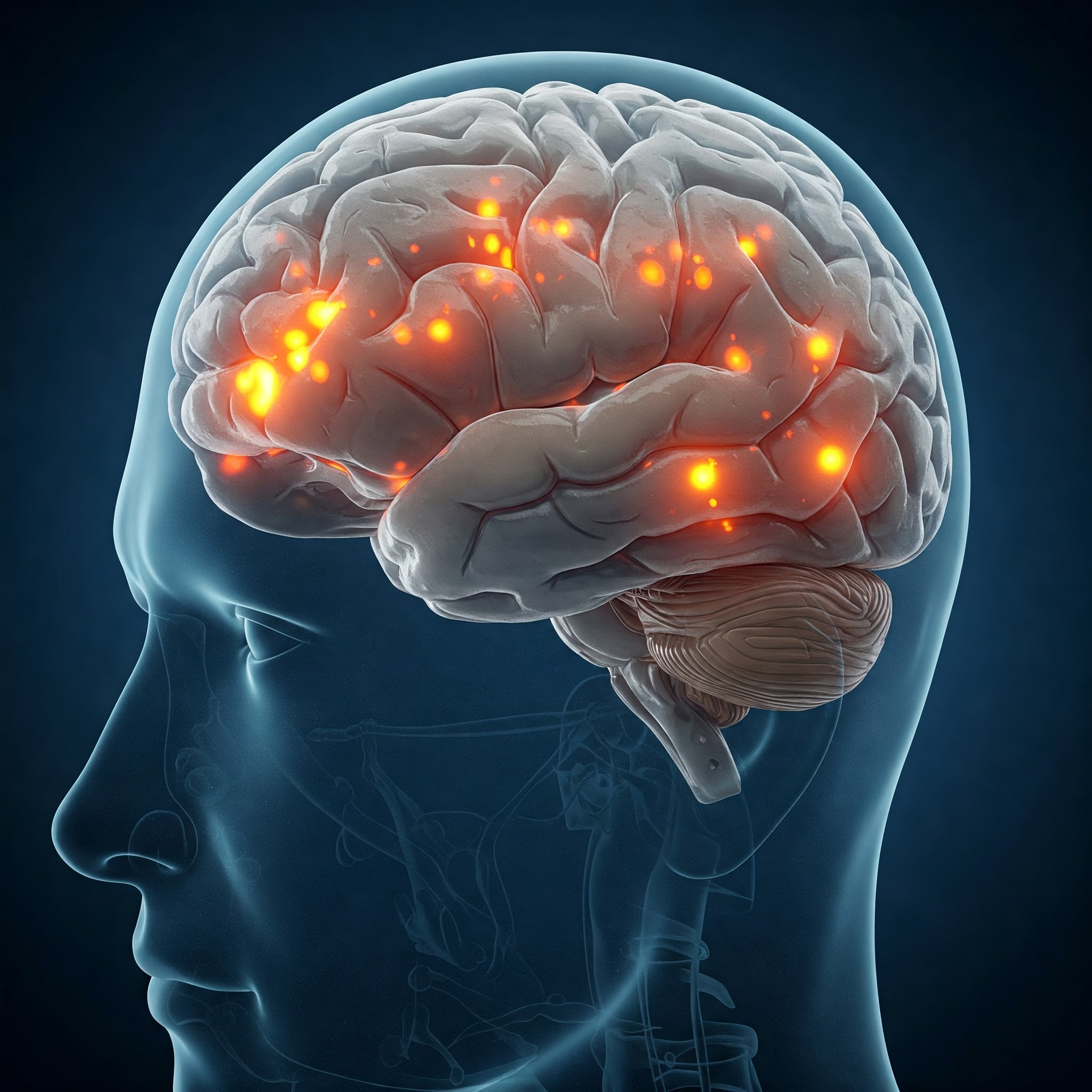
You probably don’t need an education to tell you that lack of sleep can seriously affect your mental performance. But if you’re still on the fence, there is a lot of research to support the fact that getting less than seven to eight hours a night can wreak havoc on your ability to perform even basic daily tasks.
While our number one tip will always be ‘get enough sleep’, new research offers a possible boost for those days when a full night’s rest just wasn’t possible and your morning coffee not reduced: creatine.
In a new study published in Scientific Reports, researchers found that a single high dose of creatine can significantly prevent cognitive decline caused by sleep deprivation. Known for its muscle strengthening benefits, creatine has also been researched for its role in brain strengthening, but these studies often focus on the long-term effects of small doses. This new study shows that high doses can have immediate benefits for your mental performance, especially when you are inactive.
After a sleepless night, your brain feels foggy and your reaction time slows to a crawl. This cognitive decline may be caused by a depletion of high-energy molecules in the brain. Scientists, already aware of the long-term benefits of creatine supplementation in these molecules, conducted experiments to see if a larger dose of creatine could damage the sleep-deprived brain more quickly.
The study
Participants in the study were given a large amount of creatine monohydrate – 0.35 grams per kilogram of body weight, around 20-30g – while they were awake for 21 hours straight. Their cognitive performance and brain chemistry were monitored at different times after taking the supplement. This involved doing a number of battery selection tests, memory tasks and various math and language tests.
Results
The findings paint a convincing picture and are good news for those of us who often find ourselves in the wrong position of a long night. Using high doses of creatine, researchers found:
- It improved the balance of important energy molecules in the brain.
- Prevents a drop in pH levels in the brain – essential for proper brain function.
- Improved mental performance and processing speed, helping participants to think clearly and act quickly.
What This Means for Us
This study suggests that a single high dose of creatine can provide rapid brain power during sleep deprivation, which can be a game changer for late night work sessions or early morning meetings. after a restless night.
The Bottom Line
Forget the old opinion that creatine only works for increasing or strengthening the bench press. This versatile and cost-effective supplement may be your new secret weapon for staying sharp and on top of your mental game, even when you’re short on sleep. short.

With nearly 18 years in the health and fitness space as a personal trainer, nutritionist, breathing coach and author, Andrew has spent nearly half of his life exploring how helping people improve their bodies and minds.
As our fitness editor, he prides himself on keeping Men’s Health at the forefront of reliable, trustworthy and reliable fitness information, whether it’s by writing and testing thousands of fitness tests each year. instead, delve deeper into the science of muscle building and fat loss or explore the psychology of performance and recovery.
While developing his knowledge base through workshops and courses, Andrew loves practical learning as much as theory, and constantly puts his training to the test in everything from competitions from Crossfit and strongman, to multiple marathons, to hours of 24-hour training and (very unofficial) world record attempts.
You can find Andrew on Instagram at @theandrew.tracey, or just hold up the ‘free pizza’ sign and wait for him to appear.
#Arent #Sleeping #Research #suggests #Creatine #instantly #boost #brain
Nutrition
Everything that happens to your body when you stop eating sugar
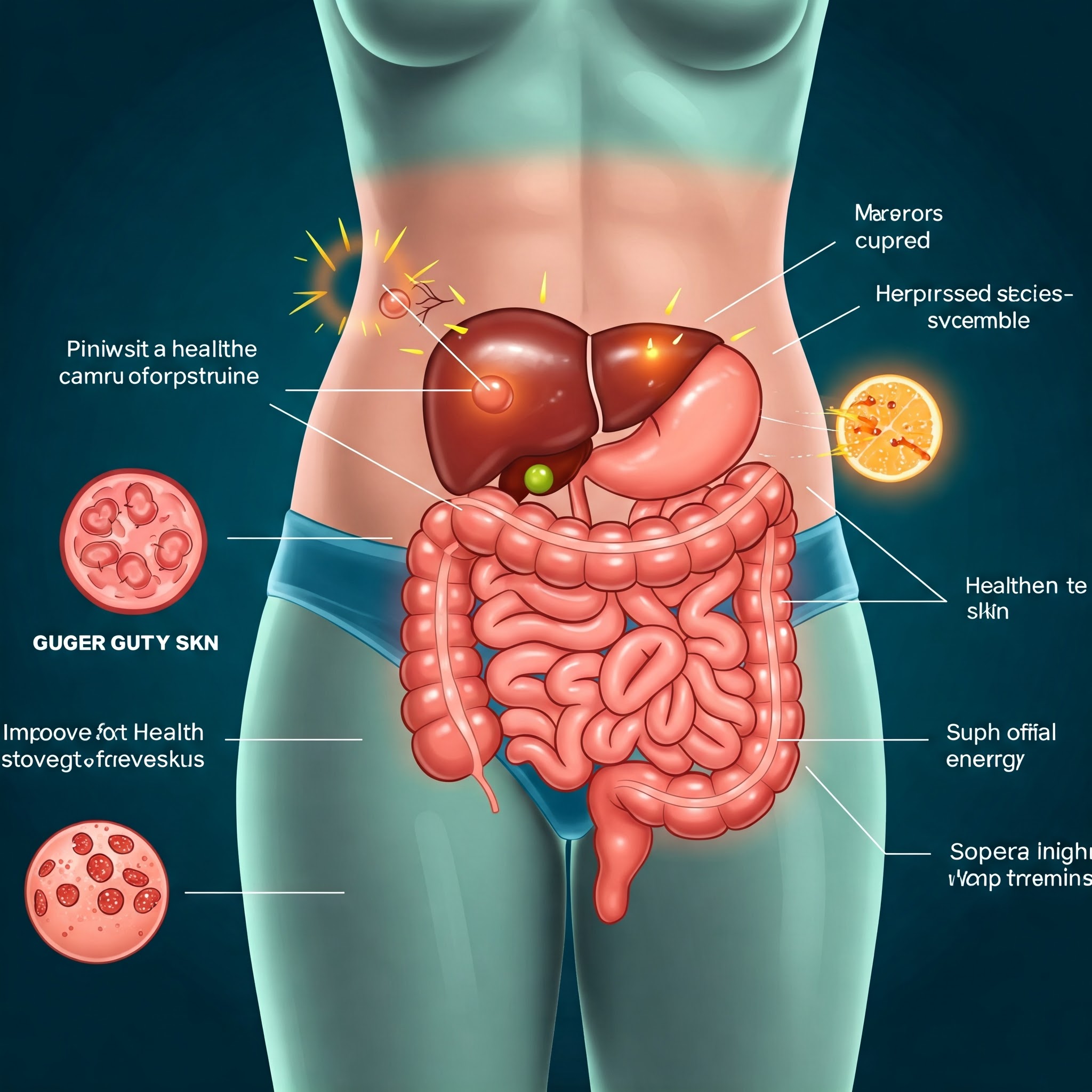
Aquí hay un artículo sobre los efectos de dejar de consumir azúcar, basado en la información que encontré, traducido al inglés:
Everything That Happens to Your Body When You Stop Eating Sugar
Quitting sugar can have surprising effects on your body, both in the short and long term. Although it can be difficult at first, the benefits for your health are worth the effort.
Sugar Withdrawal Symptoms
When you stop eating sugar, your body may experience withdrawal symptoms similar to those of other addictions. These symptoms can last from a few days to several weeks, and their intensity varies from person to person. Some of the most common symptoms include:
- Intense sugar cravings: This is perhaps the most common and difficult symptom to control.
- Headaches: Changes in blood sugar levels can cause headaches.
- Fatigue: Lack of sugar can make you feel tired and without energy.
- Nausea: Some people experience nausea when they stop eating sugar.
- Irritability: Mood swings are common during sugar withdrawal.
- Anxiety: Lack of sugar can increase feelings of anxiety.
- Concentration problems: It can be difficult to concentrate when the body is adjusting to the lack of sugar.
- Changes in sleep: Some people may have trouble sleeping at first.
Long-Term Benefits of Quitting Sugar
Once you overcome the withdrawal symptoms, you will begin to experience the numerous health benefits of quitting sugar. Some of these benefits include:
- Weight loss: Reducing sugar consumption can help with weight loss and maintaining a healthy weight.
- Improved heart health: Lowering sugar intake reduces the risk of heart disease, lowering blood pressure and improving cholesterol levels.
- Reduced risk of type 2 diabetes: Controlling sugar consumption improves insulin sensitivity and reduces the risk of developing type 2 diabetes.
- Improved dental health: Sugar feeds the bacteria in the mouth that cause cavities and gum disease. Reducing sugar consumption improves dental health.
- Clearer and younger skin: Sugar can damage collagen and elastin, leading to wrinkles and acne. Quitting sugar improves the appearance of the skin.
- Better mood: Sugar can cause mood swings and depression. Reducing its consumption can improve mood and reduce symptoms of depression.
- Increased energy: Although it can cause fatigue at first, in the long run, reducing sugar consumption provides more stable energy levels throughout the day.
- Improved brain function: Sugar can negatively affect cognitive function. Reducing its consumption improves mental clarity and concentration.
- Reduced risk of non-alcoholic fatty liver disease (NAFLD): Excess sugar, especially fructose, can lead to the accumulation of fat in the liver. Reducing sugar consumption decreases the risk of NAFLD.
Tips for Reducing Sugar Consumption
- Read food labels: Many processed foods contain added sugars.
- Cook at home more often: This allows you to control the amount of sugar you consume.
- Gradually reduce sugar consumption: This can help minimize withdrawal symptoms.
- Choose healthy alternatives: Opt for fruits, vegetables, and whole grains instead of processed and sugary foods.
- Stay hydrated: Drinking enough water can help control sugar cravings.
Quitting sugar can be a challenge, but the benefits for your health are numerous. With patience and determination, you can achieve it and enjoy a healthier and happier life.
Nutrition
The Ultimate 7-Day Diet Plan to Lower Triglycerides, Designed by a Nutritionist.
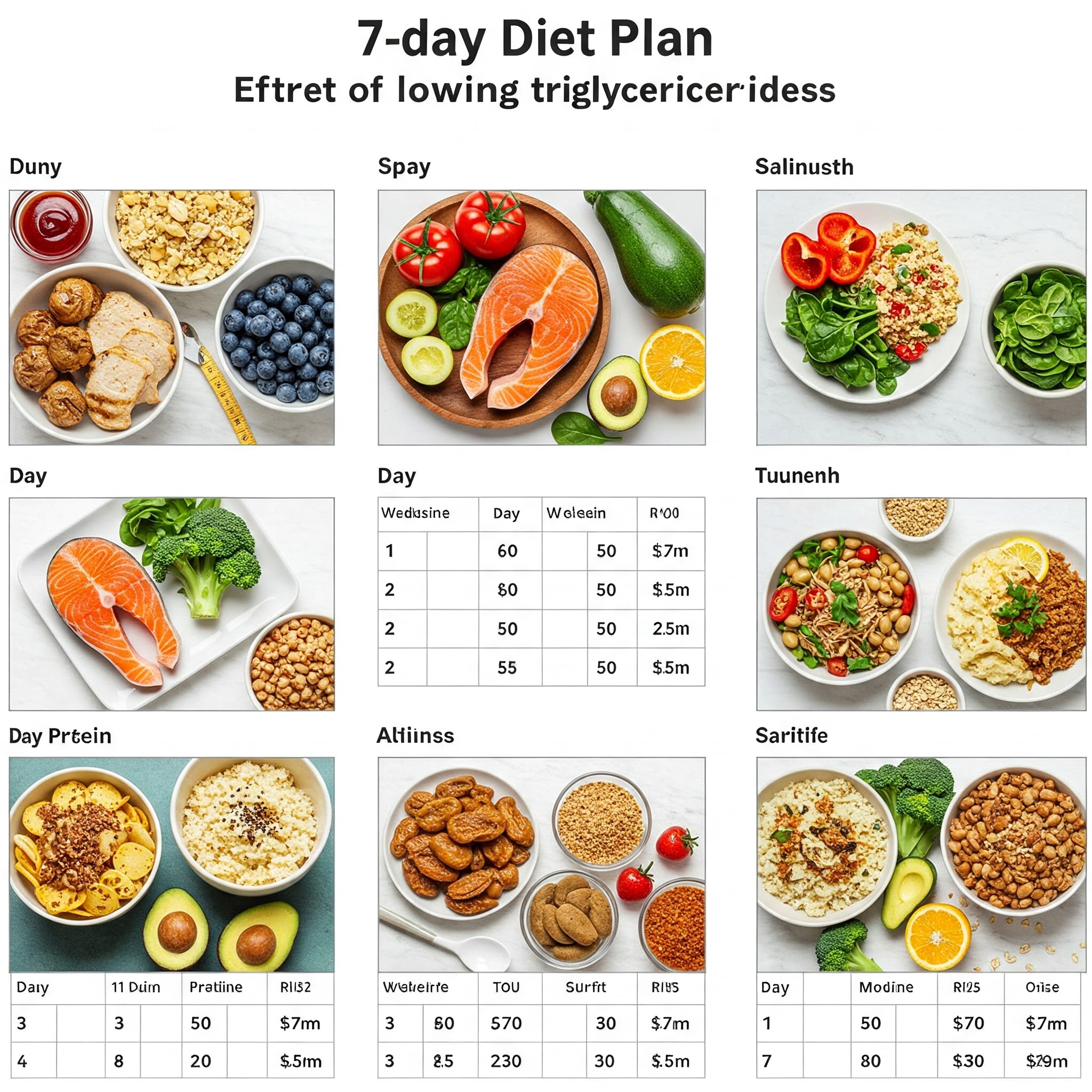
Triglycerides, sometimes called lipids, are the most common type of fat in the body. They often contain cholesterol because high cholesterol and high triglycerides can increase the risk of heart disease, and both of these conditions can be positively affected by changes in heart health. In this seven-day diet plan, we focus on fiber to help lower triglyceride levels. Fiber is an important nutrient that has many health benefits, including reducing the risk of heart disease. If you currently have high triglycerides, have been told you are at risk or simply want to increase your fiber intake, this meal plan may work for you.
How We Make Meal Plans
Registered dietitians act thoughtfully EatingWell’s Meal plans are easy to follow and fun. Each meal plan meets specific criteria based on the health conditions and / or lifestyle goals you are aiming for and is analyzed for accuracy using the nutritional database, ESHA Food Processor. Since nutritional needs vary from person to person, we encourage you to use these plans as inspiration and modify as you see fit.
Why This Meal Plan Is Good For You
Each day provides at least 31 grams of fiber. Fiber is associated with many health benefits, yet many of us do not meet our daily goals. The average American consumes 14 grams of fiber per day, less than the recommended Daily Value of 28 grams per day. While we’re focusing on fiber here, we didn’t skip another important nutrient: protein. Each day provides at least 84 grams. In addition to fiber and protein, we include many heart-healthy foods, such as fruits, vegetables, beans, nuts, seeds, whole grains and a fish.
This 1,800-calorie meal plan has variations for 1,500 and 2,000 calories to support those with different calorie needs. While we used to include meal plans and 1,200 calorie conversions, we no longer do. The 2020-2025 Dietary Guidelines for Americans suggest that cutting your calories to 1,200 per day is too low for most people to meet their nutritional needs, and is not feasible for long-term health and wellness. As with all meal plans, this is intended to serve as a blueprint for a healthy, high-fiber diet. Make adjustments as needed based on your taste preferences, habit, pantry stock and family size.
Frequently Asked Questions
-
Is it okay to combine foods if there are some I don’t like?
Indeed! Feel free to mix and match meals, repeat a meal or two or swap out a different high-fiber recipe. We aimed to get at least 31 grams of fiber per day. If you’re watching fiber or other nutrients carefully, you may want to choose something else with the same nutritional value or make changes in other areas to meet your goals.
-
Can I eat the same breakfast or lunch every day?
Yes, we offer several different options for breakfast and lunch but you can choose to eat breakfast and lunch every day if it is convenient for your schedule. you. Each breakfast ranges from 409 to 469 calories while lunch ranges from 486 to 514. These ranges are exactly the same, so choosing one of these options you can eat them every day should keep the total daily nutrition close.
-
What causes high triglycerides?
High triglycerides can be caused by many factors, such as excess calories stored as triglycerides in the blood, lack of exercise, eating too many foods high in fat and added sugar as well as drinking alcohol. Fortunately, lifestyle changes such as increasing exercise, increasing fiber, reducing alcohol and losing weight can help improve triglyceride levels.
-
Why is there no change for 1,200 calories?
We no longer offer adjustments for 1,200-calorie days in our meal plans. The 2020-2025 Dietary Guidelines for Americans suggest that cutting calories to 1,200 per day is too low for most people to meet their nutritional needs, and is not feasible for health and long-term health.
How Fiber Helps Lower Triglycerides
Fiber is a type of unsaturated carbohydrate that helps improve blood sugar levels, aid in weight loss, regulate digestion and improve heart health. Increased fiber intake is often recommended as a strategy to reduce high cholesterol, but does eating more fiber have a positive effect on triglycerides? Research shows that eating more fiber is associated with lower triglyceride levels in adults who are overweight or obese. With a wide range of positive health effects, aiming to eat more fiber is a strategy that many people can benefit from.
High-Fiber Foods to Focus on:
- Fruits
- Vegetables
- Whole grains
- Nuts
- Seeds
- Avocado
- Beans
- Lens
- Peas
How to Prepare Your Meals for the Week:
- Make High Protein Strawberries and Peanut Butter Overnight Oats for breakfast on Days 2 to 4.
- Prepare Chicken and Cabbage Soup with Pesto for lunch in Days 2 to 5.
Day 1
Breakfast (409 calories)
AM Snack (217 calories)
Lunch (486 calories)
PM Snack (234 calories)
- ¼ cup of toasted undried almonds
- ⅓ cup blueberries
Dinner (464 calories)
Statistics of the Day: 1,811 calories, 80g fat, 115g protein, 166g carbohydrates, 36g fiber, 1,794mg sodium
Make it 1,500 calories: Cut back to 1 serving of roasted Buffalo Chickpeas during the AM snack and omit the almonds during the PM snack.
Make it 2,000 calories: Add 1 medium banana and 1 Tbsp. almond butter as a snack.
Day 2
Ali Redmond
Breakfast (443 calories)
AM Snack (217 calories)
Lunch (514 calories)
PM Snack (131 calories)
Dinner (470 calories)
Statistics of the Day: 1,775 calories, 53g fat, 119g protein, 205g carbohydrate, 32g fiber, 1,901mg sodium
Make it 1,500 calories: Skip the kefir at breakfast, reduce to 1 serving of roasted Buffalo Chickpeas in the AM snack and change the PM snack to 1 medium apple.
Make it 2,000 calories: Add 1 medium banana and 1 Tbsp. almond butter as a snack.
Day 3
Breakfast (443 calories)
AM Snack (131 calories)
Lunch (514 calories)
PM Snack (234 calories)
- ¼ cup of toasted undried almonds
- ⅓ cup blueberries
Dinner (482 calories)
Statistics of the Day: 1,804 calories, 82g fat, 105g protein, 170g carbohydrate, 31g fiber, 1,900mg sodium
Make it 1,500 calories: Skip kefir at breakfast and almonds at PM snack.
Make it 2,000 calories: Add 1 medium banana and 1 Tbsp. almond butter as a snack.
Day 4
Actor: Stacy k. Allen, Props: Christina Brockman, Food Styling: Jennifer Wendorf
Breakfast (443 calories)
AM Snack (176 calories)
Lunch (514 calories)
PM Snack (172 calories)
- 1 cup blackberries
- 1 (5.3-oz.) container low-fat plain yogurt
Dinner (502 calories)
Statistics of the Day: 1,806 calories, 58g fat, 121g protein, 203g carbohydrate, 31g fiber, 1,965mg sodium
Make it 1,500 calories: Skip the kefir at breakfast, change the AM snack to 1 medium apple and skip the yogurt at the PM snack.
Make it 2,000 calories: Add to 4 servings of Pecan Pie Energy Balls in the AM snack and add 3 Tbsp. selected walnuts in PM.
Day 5
A picture of respect
Breakfast (469 calories)
AM Snack (176 calories)
Lunch (514 calories)
PM Snack (152 calories)
- 1 medium apple
- 1 (0.5-oz.) slice of Cheddar cheese
Dinner (489 calories)
Statistics of the Day: 1,800 calories, 80g fat, 84g protein, 203g carbohydrate, 40g fiber, 1,987mg sodium
Make it 1,500 calories: Skip the horse at breakfast, change the AM snack to 1 medium peach and skip the Cheddar cheese at the PM snack.
Make it 2,000 calories: Add 1 medium banana and 1 Tbsp. almond butter as a snack.
Day 6
Breakfast (409 calories)
AM Snack (176 calories)
Lunch (486 calories)
PM Snack (105 calories)
Dinner (609 calories)
Statistics of the Day: 1,785 calories, 69g fat, 111g protein, 191g carbohydrates, 34g fiber, 2,110mg sodium
Make it 1,500 calories: Change the AM snack to 1 medium peach, skip the yogurt at lunch and change the PM snack to 1 medium orange.
Make it 2,000 calories: Add 2 Tbsp. almond butter in PM snack.
Day 7
Photographer Victor Protasio, Food Stylist Julian Hensarling, Prop Stylist Tucker Vines
Breakfast (469 calories)
AM Snack (176 calories)
Lunch (486 calories)
PM Snack (136 calories)
- 1 medium peach
- 1 large hard-boiled egg
Dinner (523 calories)
Statistics of the Day: 1,790 calories, 82g fat, 92g protein, 185g carbohydrate, 33g fiber, 2,227mg sodium
Make it 1,500 calories: Skip the horse at breakfast, the yogurt at lunch and the peach at the PM snack.
Make it 2,000 calories: Add ¼ cup of toasted unsalted almonds as a snack.
#Ultimate #7Day #Diet #Plan #Triglycerides #Designed #Nutritionist
-

 Mental health10 meses ago
Mental health10 meses ago7 Magical Rituals That Convince Even the Most Nervous People
-

 Mental health10 meses ago
Mental health10 meses agoThe Playbook Seeking to Transform Cognitive Processing Technology
-
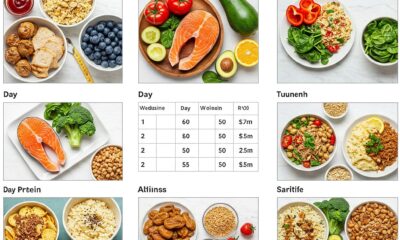
 Nutrition10 meses ago
Nutrition10 meses agoThe Ultimate 7-Day Diet Plan to Lower Triglycerides, Designed by a Nutritionist.
-

 Medication10 meses ago
Medication10 meses agoAngry patients are pushing for new government advocates to lower drug prices
-

 Mental health10 meses ago
Mental health10 meses agoAsking Eric: A chronic cough causes social anxiety
-

 Business2 días ago
Business2 días agoSave Money in the USA: Shield Your Finances from Economic Shifts!
-

 Medication10 meses ago
Medication10 meses agoUdupi: Krishnaveni Ashrayadhamaa, Ayurveda Treatment and Wellness Center established
-

 Mental health10 meses ago
Mental health10 meses agoBetterHelp 101: Understanding Online Therapy and How to Find Support (Sponsored)




